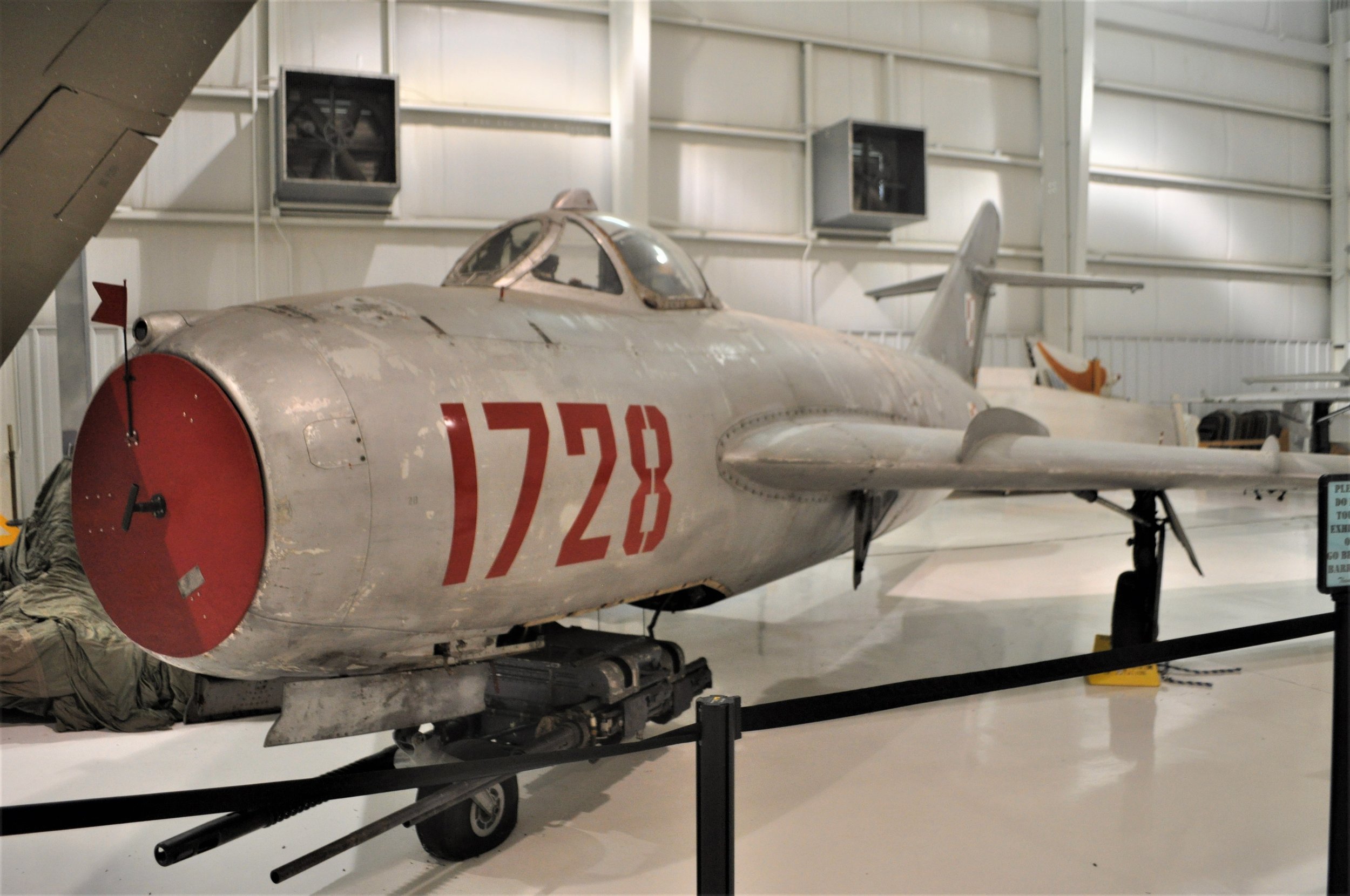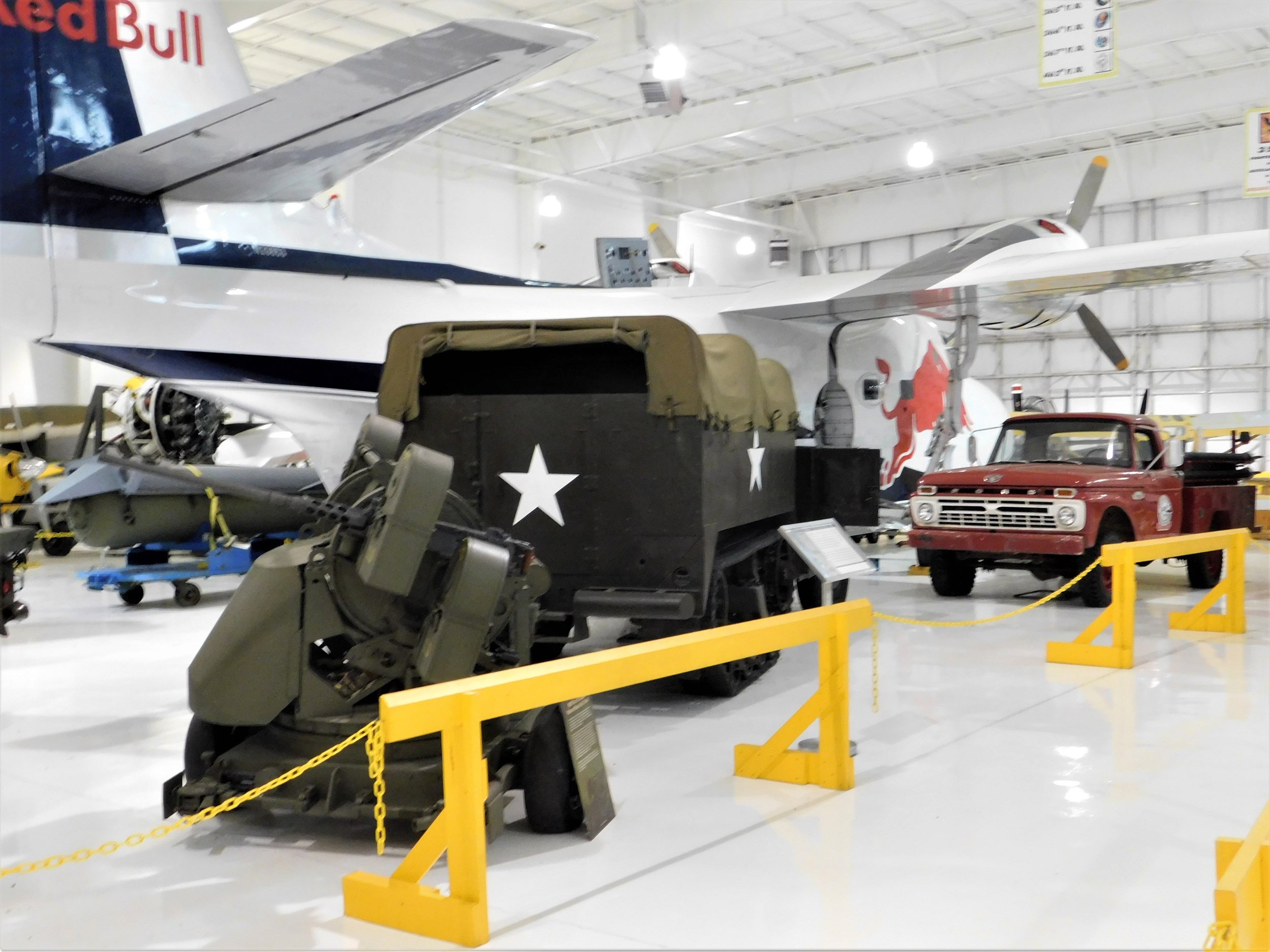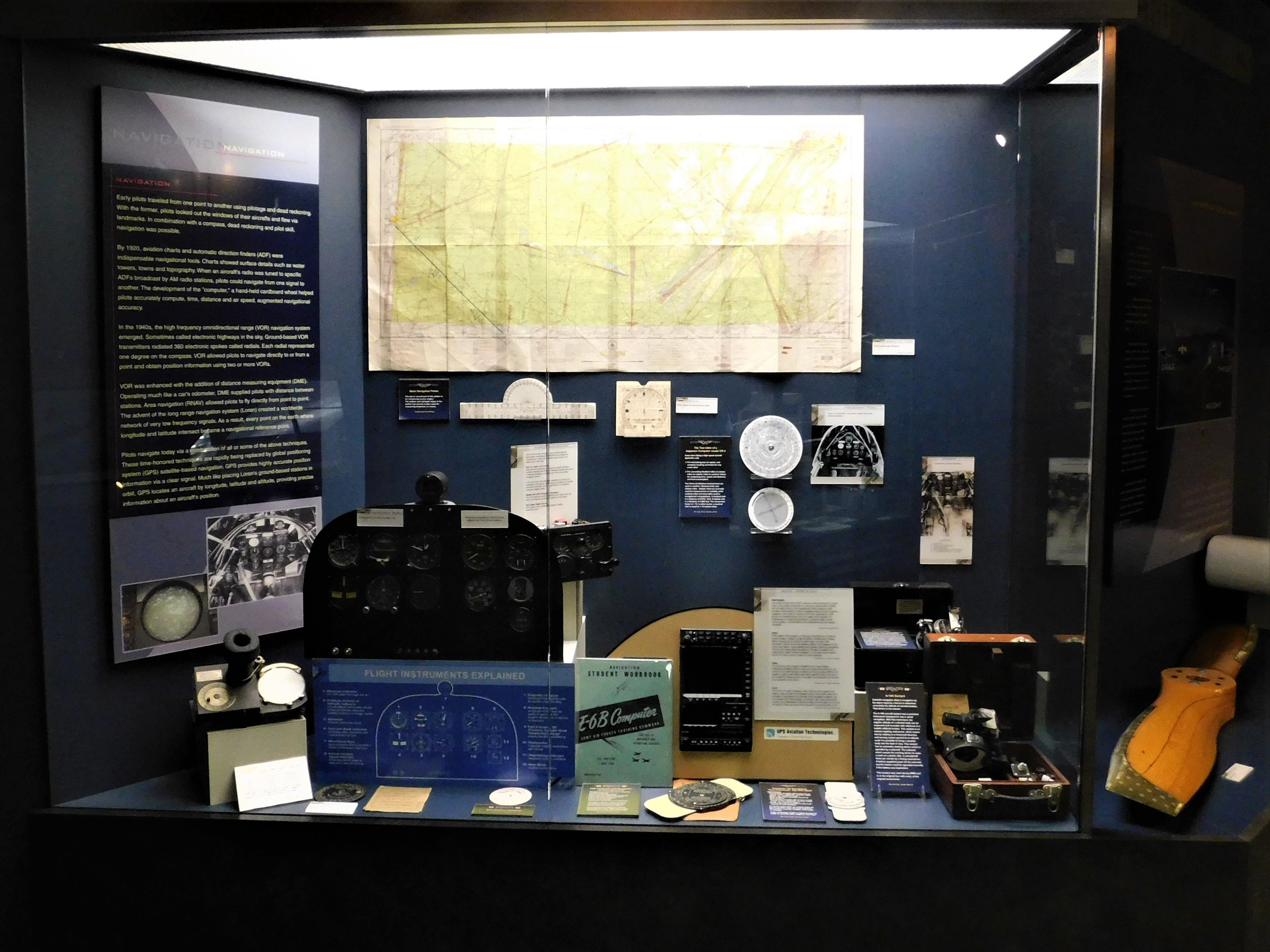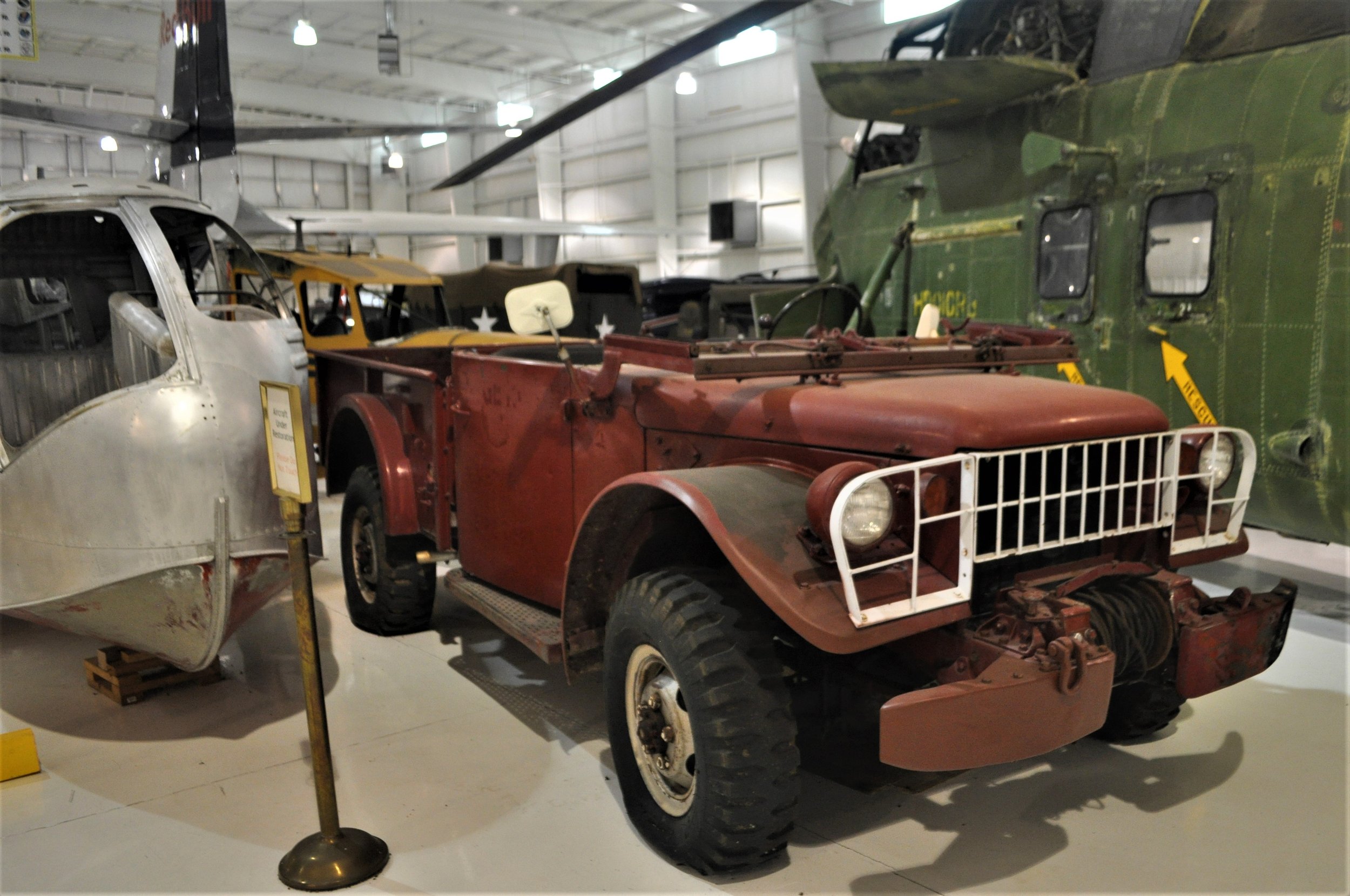The Tennessee Museum of Aviation, Sevierville, TN
Issue 31 A visit to the The Tennessee Museum of Aviation, Sevierville, TN February, 2022
------------------------------------
On April 30, 1975, the city of Saigon fell to the North Vietnamese ending the decades long Vietnam War. During the days and weeks leading up to the fall of Saigon there was chaos and confusion among the military and civilians alike. The focus was on the safety and possible evacuation of personnel but also on the disposition of equipment belonging to the South Vietnamese military. Most of this equipment had been provided by the United States, including hundreds of aircraft, some of them brand new. Pilots and aircrew discussed plans during those final weeks- what planes could they fly, and where could go? And how many people could they evacuate? A number of aircraft were flown to Thailand, some landing at airports and some only making it to a highway or a field before running out of gas.
U Taphao, in Thailand, was a prime destination for the evacuees. It was a B-52 base with a 12,000’ runway and by the end of the day on April 29, there were 165 VNAF airplanes at U Taphao. There were also 97 Cambodian aircraft that had escaped after the fall of Phnom Penh.
It soon became known that the North Vietnamese planned to claim all the VNAF planes in Thailand and plans were again made to move them. The carrier Midway was enroute to Thailand to deliver H-53 helicopters to assist in the evacuation of Saigon. It was decided to load as many aircraft as possible onto the Midway. The newest aircraft were prioritized, leaving older prop aircraft, such as the A-1E, behind.
Under the direction of Brigadier General Harry "Heinie" Aderholt , two former A-1 pilots, Captain Roger Youngblood and Major Jack Drummond, decided to move some of the A-1s to a less conspicuous location. They were familiar with Ta Khili Air Base in central Thailand, and decided to fly the planes there. Four Skyraiders were moved before the unauthorized operation was halted. Aderholt remained in Thailand for four years after leaving the Air Force and he realized the Skyraiders, which were still in Ta Khili, were becoming rare and valuable. He arranged to ship the four planes to the U.S. where they arrived by 1980. One of those four planes, BuNo 139665, is on display in the Tennessee Air Museum, and is maintained in flying condition.
———————————————————————————————-
Founded in 2001, by Neal Melton, the museum is in a convenient location at the edge of the Great Smoky Mountains for tourists to view this superb collection of aircraft and artifacts.
The museum is home to a number of aircraft that are in flying condition and they are easy to spot by the drip pans below the engines. Among the airworthy aircraft is a pair of Republic P-47 Thunderbolts.
The P-47 is powered by the Pratt & Whitney R-2800, 18-cylinder radial engine. If you happen to visit when one or both of these planes are flying, you will be treated not only to a wonderful sight, but to an amazing sound of this powerful engine.
Photo courtesy of the Tennessee Museum of Aviation
First flown in 1941, over 15,000 of these fighter-bombers were built and they served in all theaters during WW-II. The Thunderbolt was effective as a high-altitude bomber escort as well as an excellent ground attack aircraft. The ground attack capability and pure strength of the p-47 lives on in the Fairchild-Republic A-10 Thunderbolt II.
The museum has a second hangar next door for maintenance and restoration (the hangar is not open to the public). When we visited, the second P-47 (“Hun Hunter XVI”) was in for an annual. At any time when you visit, you are likely to find at least one of the flying aircraft in for maintenance.
An aircraft we have not seen before in this series is the North American OV-10 Bronco. Flown by the Navy, Air Force, and Marines, the Bronco was designed for a number of missions during the Vietnam War. With twin Garrett T76 turboprop engines, the Bronco was capable of short takeoffs and landings and had a cruise speed of 250 knots. The primary role of the Bronco was as a forward air control (FAC) aircraft. The Bronco gave much more capability than other close air support and forward air control aircraft such as the L-19/O-1 Bird Dog and O-2 Skymaster. The Bronco could carry up to 3,200 pounds of external armament, five paratroopers, or two litter patients and an attendant. It was armored, had ejection seats, a five-and-a-half-hour range, and its STOL capability allowed it to land and take off from aircraft carriers. The Bronco had it’s flaws. It was underpowered, vulnerable to ground attack, and always fatal during ditching. Despite these flaws, FAC pilots in Vietnam considered the Bronco a vast improvement over the O-1 and O-2.
There are three Russian designed MiGs on display here at the Tennessee Museum of Aviation: two MiG-17s and a MiG-21.
The Mikoyan-Gurevich MiG-17 first flew in 1950 and was in service for many years for the Soviet Air Force, as well as 20 other countries. It is still in limited service in North Korea. The MiG-17 was flown throughout the Vietnam War.
This particular MiG-17 was built in Poland under the designation Lim-5, which is identical to a MiG-17F. It is painted in the colors and has the markings of MiG-17s that were provided to the North Vietnamese by the Soviet Union, during the Vietnam War.
The Mikoyan-Gurevich MiG-21 first flew in 1955 and, like the Mig-17, it was operated by a number of countries. It is still operational in the air forces of several countries today, most notably in India.
Another aircraft in the museum that is maintained in flying condition is this Beech 18. The ubiquitous Beechcraft was manufactured from 1937 to 1969 and over 9,000 were built. The sturdy and reliable twin was used in almost any role you can think of- bombing, training, fire-fighting, spraying, drug running, and even as feeder airliners and corporate aircraft.
Photo Courtesy of the Tennessee Museum of Aviation
This particular Beech 18, Serial number 5560, was delivered to the U.S. Navy in 1943. With the Navy designation SNB-2, it was used as an advanced navigation trainer. After WW-II, it was part of a batch of over 700 Navy SNBs that were remanufactured at the Beechcraft factory in Wichita. The rebuild included a new wing center section, fuselage, landing gear, and brakes. All other parts, including the engines, were refurbished, resulting in a zero-time aircraft. These rebuilt planes were basically the same as new Beech 18s that were coming out of the factory. This aircraft was redelivered to the Navy in 1953 and designated an SNB-5P, now with BuNo 51233. The conversion was designed for aerial photography use, as well as for use as a photographic trainer. In 1962 the Navy joined the unified military designation system and the Beech became an RC-45J. This plane was dropped from the Navy inventory in 1969 and purchased by Neal Melton in 1997.
---------------------------------------
The Tennessee Museum of Aviation is another museum that has taken great pains to present its aviation memorabilia in an attractive, interesting, and organized way. Each display case is well-lit and tells a specific story that is accurately described with photographs and objects. As you enter the main area, seen above, there is a complete timeline of the history of aviation on the right wall. It would be easy to spent an hour just browsing this comprehensive view of aviation history.
This display of the sinking of the battleship Arizona at Pearl Harbor is full of details and contains an actual piece of the aft deckhouse superstructure salvaged from the Arizona.
Used in aircraft just before, and during, World War I, the rotary engine powered many aircraft of that era and the Gnome was the most successful rotary engine. The difference between the later radial engine and the rotary is that a radial has a fixed cylinder block with rotating crankshaft, while in a rotary the crankshaft remains stationary and the entire cylinder block rotates around it. Although it may seem counterintuitive, rotary engines powered early aircraft rather than radials because they were simpler to build, The museum website has an interesting animated video showing how a rotary engine is put together. At the end of the 15-minute video, you can see a rotary engine in operation.
https://www.tnairmuseum.com/virtual_exhibits/gnome-rotary-model-b-engine
A unique feature in the main display hall is this mural of a B-17 cockpit. You can look through the windows out to the hangar floor
---------------------------------------------
In addition to the well-organized cases in the display halls, the hangar has aviation objects placed randomly between the aircraft. Although this is fairly common at museums, here there is a quirkiness about the types of objects on display that is interesting and compelling. You will also see period vehicles in the hangar which just adds to the great atmosphere.
An example of the variety of items displayed in the hangar are these engine nacelles from the 1962 Lockheed Jetstar that was owned by Elvis Presley.
Another display that interested me was this collection of training devices used for teaching the systems of the KC-97.
KC-97G Hydraulic system
In the not-too-distant past, visual aids like these were how aircraft systems were taught in the military as well as for airline and corporate training. I recall these large, operating training aids being wheeled in and out of the ground school classrooms and being stored in the hallways when not in use. There probably aren’t too many items like this still around and it is great to see this little slice of aviation history being preserved, and on display for younger generations to see.
KC-97G Gear and Flap System
As you can see, there were often original aircraft parts used in the construction of these training aids.
KC-97G Electrical Power System
In this day of iPads and computers, this is a great illustration of how it used to be done.
Another example of the unique type of artifacts in the museum is this wrecked P-47 engine and part of the cockpit, just as they were when recovered from the Pacific Theater. Displayed next to a flying P-47, this is an excellent illustration of the condition of many vintage aircraft at the start of the restoration process.
Also unique is this fuselage of a Republic RC-3 Seabee. Although not a candidate for restoration, it is on display to give a rare look at the basic construction of this classic amphibian.
RC-3 Seabee at a “splash-in” at Tavares, FL airport. Photo courtesy of reader Dick James.
Occupying center stage in the hangar area is another of the flying aircraft in the collection, a Grumman HU-16E Albatross. Built between 1949 and 1961, the Albatross served with the Air Force, Navy, and Coast Guard, beginning with search and rescue operations during the Korean War. Powered by R-1820 Wright Cyclone engines, the HU-16 was a rugged, seaworthy plane that was designed to land in open seas with up to four foot swells. It could operate in even rougher seas, but needed JATO (Jet Assisted Take-Off) in heavy seas. The Albatross was used extensively by the Air Force and Navy for search and rescue during the Vietnam War.
The four A1s in the opening story are all in museums today, and three of them are still flying.
A-1E BuNo 132683 Colorado Springs, CO (National Museum of WWII Aviation) **
A-1H BuNo 135332 Washington, DC (National Air and Space Museum)
A-1H BuNo 139606 Addison, TX (Cavanaugh Flight Museum) **
A-1H BuNo 139665 Sevierville, TN (Tennessee Museum of Aviation) **
** In flying condition
Produced just after WW-II, the A-1 Skyraider (originally designated the AD) was the backbone of Navy and Marine strike forces during the Korean War and the type continued to serve well into the Vietnam era. Mentioned earlier was the fact that today’s A-10 honors the P-47 with the name Thunderbolt II. Pilots who have flown both the A-1 and the A-10, however, have called the A-10 the true descendant of the A-1. They are three amazing aircraft, however you look at it.
Photo Courtesy of Tennessee Museum of Aviation
The museum has hosted reunions of Vietnam Veteran A-1 Skyraider pilots several times. The reunions feature the museum’s A-1 in flight and have also hosted the A-1 from the Cavanaugh Museum during a reunion. Several years ago, both of those A-1s flew to Colorado Springs to bring three of these historic planes together for a flying reunion.
—————————————————————————-
Located in a great vacation area in the Smoky Mountains, this museum is an excellent place to include in a family vacation. With an interesting display gallery, a number of flying aircraft, and lots of unique items on display, it’s a museum not to be missed.
—————————————————————————————-
Many thanks to Rhonda Melton for her assistance in research for this blog.
As always, thanks to my brother Mike for editing the blog.
-----------------------------------------------
On a personal note, I first visited the Tennessee Museum of Aviation in May 2018, on a PC-12 trip. I flew that trip with my good friend Teen Rawls and he enjoyed touring the museum with me. We lost Teen this week in a tragic PC-12 accident, and this blog is dedicated to Teen. Rest in peace, my friend.
-----------------------------------------------
To learn about what to do in the local area, museum hours and costs as well as books to read and other interesting odds and ends, keep reading! At the end you will find a photo gallery of the entire museum.
PLANNING YOUR VISIT
MARCH 1 thru NOVEMBER 30
Tuesday-Saturday: 10:00 AM – 6:00 PM
CLOSED: Sunday & Monday
CLOSED: Thanksgiving Day
WINTER HOURS
DECEMBER 1 thru FEBRUARY 28
Tuesday-Saturday: 10:00 AM – 5:00 PM
CLOSED: Sunday & Monday
CLOSED: Christmas Day
Christmas Eve – closing at 3:00 PM
ADMISSION FEES
General Admission: $15.75
Senior Admission (60+): $12.75
Child Admission (6-12 years): $9.75
Children Under Age 6: Free
Military Admission: $10.75
FLYING IN
Gatlinburg-Pigeon Forge Airport (KGKT) has a 5500’ runway (10/28) with RNAV and VOR approaches to runway 10. The museum is located on the west end of the airport, near the full service FBO ramp. We parked on the museum ramp (right next to the A-7 on display) and the FBO fueled us there. Excellent service from the FBO. Many thanks to my son AJ for making the trip with me in his Baron!
LOCAL ATTRACTIONS
When our kids were young, we took an RV trip to this area and enjoyed the many attractions in Pigeon Forge and Gatlinburg. A day at Dollywood was enjoyed by all as well as driving along the Blue Ridge Parkway.
WHERE TO EAT
There are numerous restaurants in the general area of the airport.
SUGGESTED READING
Reader Page Wiencek recommended the book “1000 destroyed” by Grover C. Hall, jr. as a great read, especially about P-47s. The book is a history of the 4th Fighter group during WW-II. The group, part of the Eighth Air Force, was based in Debden England flying Spitfires, P-47s, and P-51s. The 4th Fighter group lays claim to being the first fighter group to penetrate German airspace and the first to escort bombers all the way to Berlin. Written in 1978, it is readily available on the usual sites. Thanks Page!
MUSEUM WEBSITE
UP NEXT
Western North Carolina Air Museum
MUSEUMS ARE WHERE YOU FIND THEM
This segment is dedicated to finding interesting aviation artifacts that are in public view- but not in an aviation museum. If you see one send a photo!
Reader Doug Campbell recently visited the Solomon Islands and sent these photos of some of the many remaining relics from WW-II. Doug visited various museums and memorials in the Solomons and these photos are from The Vilu War Museum. The museum is a difficult place to reach and the trek is mainly made by WW-II enthusiasts.
Doug wrote- “The Vilu War Museum is a remarkable assortment of Japanese, American, Australian and New Zealand war relics; remnants of the Guadalcanal campaign in which some 7,100 Allied and 31,000 Japanese troops were killed. Aircraft, artillery pieces, and ordnance sit in varying condition outside on the well-manicured lawns, alongside monuments for fallen Japanese, American, New Zealand, Australian, and Fijian soldiers and sailors.”
Thanks Doug!
Grumman F4F-4 Wildcat, BuNo 12068, at the Vilu War Museum, Guadalcanal, Solomon Islands. Photo by Douglas E. Campbell
The remains of an engine and propeller belonging to a Bell P-39 Airacobra. Photo by Douglas E. Campbell.
Japanese Mitsubishi G4M1 Betty 1570 nose. The Betty’s outer wing panel is also located on the grounds of the museum. Photo by Douglas E. Campbell.
—————————————————————————
GALLERY
Click on any photo to enlarge
Issue 31, Copyright©2022, all rights reserved. Except where noted, all photos by the author





































































